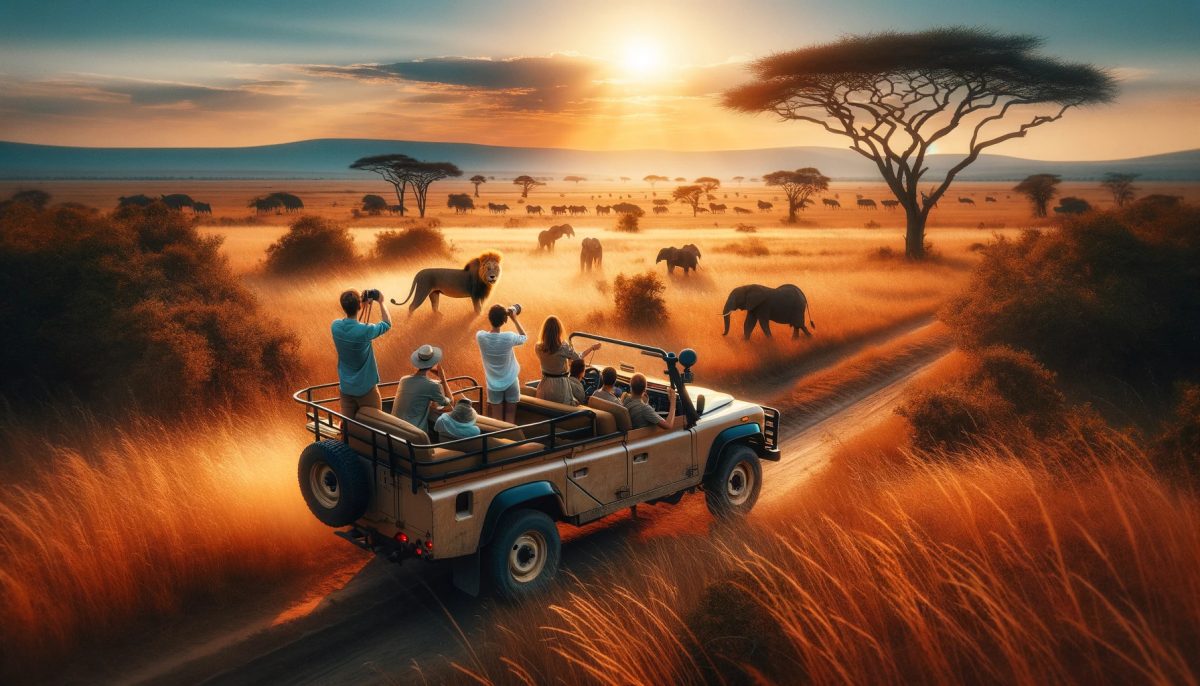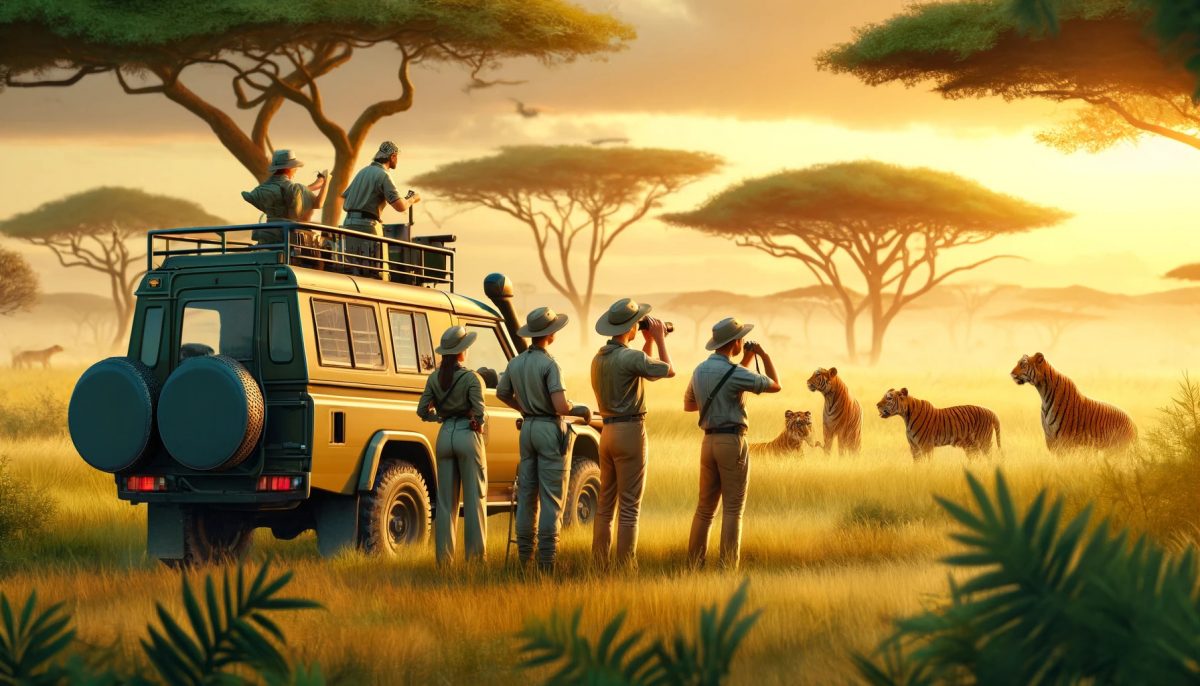Tips to Spot a Royal Bengal Tiger on a Trip to India

Sighting tigers in the wild is an art that can only be mastered by a combination of strategic planning, respect for wildlife, and above all a patient mindset.
By implementing these time-tested practices, not only will you increase the chances of sighting a Royal Bengal tiger in the wild,but contribute to the conservation of this magnificent large-hearted animal as well. Booking via a reputed travel company like Naturetrek would highly improve your chances of spotting this elusive feline.
India is home to 75% of the tiger population of the world, but like other nature sightings, spotting the big can be very unpredictable, especially because their camouflage makes detection difficult.
To ensure that you make the most of this thrilling experience, here are some practical tips to maximize your tiger-spotting opportunities.
Pick the Right Gear
Wearing and carrying the right gear plays an important part in the failure or success of a tiger safari. Apart from outdoor essentials like sunscreen, waterproof jackets, hats, and water. Don clothes that have neutral colors and blend with the surroundings.
Carry a good pair of binoculars that will phenomenally increase the chances of sighting a tiger if the big cat is at a distance. If you are a photo enthusiast be sure to bring a camera with a lens, should you get a pose of a tiger at a waterhole or stalking prey.

Pick the Right Season
While most national parks of India remain open between October and July, tiger spotting is the best during the dry summer months from March to June when this elusive animal ventures out of the thick jungle in quest for water.
Moreover, during this period, the grass is low and the vegetation sparse which makes animal spotting far more easy, than at any other time of the year. That being said, tiger sightings are reported throughout the season, but your best bet of encountering this animal on a safari is at the height of summer.
Pick the Right Time
Tigers are basically nocturnal animals that are most active during early morning and late evening. To increase the chances of seeing one on a safari, make sure you head into the forest at the right time.
This is the period when they come out either in search of prey or to mark their territory. National Parks in India have set fixed morning and evening safari timings according to the season in order to allow guests the maximum chance to see a tiger on the prowl.
Pick Sound Clues From the Jungle
Keep distractions at the minimum to catch the faintest of sounds from the jungle which can give you a clue about the movement of the big cat. Spotting the tiger depends a lot on the calls of the various animals and birds which indicate that the vat is on the move.
Prey animals like spotted deer, sambar, and monkeys make high-pitched alarm calls to alert other members of their family that a predator is on the move. So be attentive while on a safari and keep your eyes and ears peeled for sounds that may indicate cat movement as these alarms are few and far between.

Pick an Ideal Safari Destination
India is fortunate to have several large tracts of forest set aside for the preservation and conservation of its diverse flora and fauna. Names that instinctively come to mind are Corbett, Ranthambore, Kanha, and Bandhavgarh where tiger density is high and sightings are more or less assured.
With so many options available, it is a bit challenging to pick the right park. So do a bit of research and also obtain word-of-mouth information on the movement of tigers in a reserve you wish to go to, so as not to return back disappointed. Having said that, go with an open mind as wildlife sightings can never be guaranteed.
Pick Your Destination At Least 120 Days in Advance
The National Parks of India strictly regulate the entry of the number of safari vehicles that could enter a particular zone during the morning and evening safaris.
These slots open for booking 120 days in advance and are grabbed up within hours or a day of opening, especially during the peak season for the most sought-after safari zones.
Making timely bookings is very important to get a zone of your choice where chances of tiger sightings have been reported to be good.
Pick an Experienced Guide
Every safari vehicle entering a tiger reserve has to be accompanied by a registered guide, not only to provide guests an insight into the forest and its bird and animal life, but to monitor the safety and well-being of the visitors as well.
These guides are typically well trained and have an in-depth knowledge of the flora and fauna of the region, but all do not possess the same acumen and skill needed for wildlife spotting.
Ask your lodge owner for recommendations for an experienced naturalist, as the expertise they possess can make all the difference to the safari. Tigers leave pug marks and scratches on tree trunks to mark their territory, signs that only an expert guide can pick up to enhance views of seeing this majestic predator.
With years of experience behind them, a good naturalist can make your overall safari experience worthwhile, even if you return without spotting the big cat.
Pick a Mix of Different Tiger Reserve Zones
Most of the popular tiger reserves like Kanha, Bandhavgarh, Tadoba, and Ranthambore in India are divided into a number of zones, each open for a limited number of safari vehicles to enter.
There are typically two safaris per day, one in the morning and the other in the evening. To increase your chances of spotting tigers and other jungle animals, book a safari in a mix of different zones as tigers are territorial animals and constantly on the move to mark and patrol their territory.
Since tigers are moving from one zone to another, you get more chances of coming across one if you do a safari in a mix of safari zones.

Pick a Good Tour Consultant
Aimlessly roaming from one park to another will not do you any good unless you have planned the whole trip right.
Ask a destination specialist who is well-versed with the knowledge of all the parks you intend to travel after considering the following factors:
- Destination and national parks to include
- Travel distance and connection between the parks
- Availability of safari permits
- Availability of skilled guides
- Competitive pricing of accommodation and safaris
- Tiger sighting activity in the different zones
- Comfortable accommodation options as near to the entrance gate as possible

